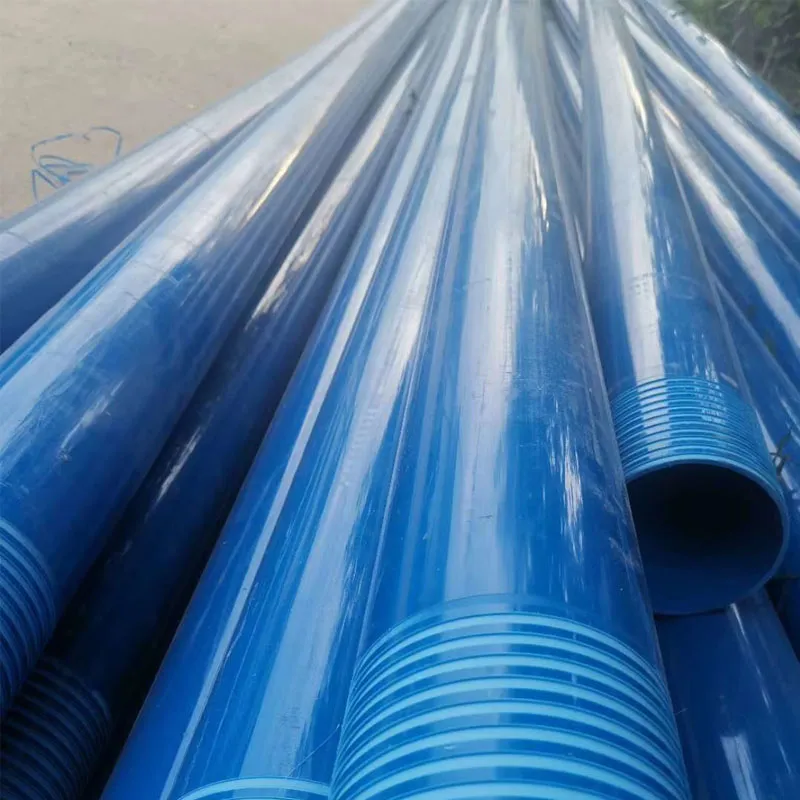Dec . 09, 2024 17:48 Back to list
Manufacturers of Double Wall Corrugated Pipes and Their Production Processes
Double-Walled Corrugated Pipe Factories A Comprehensive Overview
Double-walled corrugated pipes (DWCP) are sophisticated drainage solutions widely used in various applications due to their durability, flexibility, and resistance to environmental factors. The production of these pipes involves specialized factories that utilize advanced technology and high-quality materials to ensure that they meet stringent industry standards. In this article, we will explore the features of double-walled corrugated pipe factories, their manufacturing processes, and the significance of their products in modern infrastructure.
The Structure of Double-Walled Corrugated Pipes
Double-walled corrugated pipes are composed of two layers an inner smooth wall and an outer corrugated layer. The inner smooth layer facilitates the efficient flow of fluids, while the outer corrugated layer provides structural integrity and resistance to external pressure. This dual structure not only enhances performance but also ensures longevity, making these pipes suitable for various applications, such as stormwater management, sewage disposal, and agricultural drainage systems.
Manufacturing Process
The manufacturing process of double-walled corrugated pipes begins with the selection of high-quality raw materials, usually high-density polyethylene (HDPE) or polypropylene. These materials are chosen for their strength, resistance to chemicals, and ability to withstand extreme temperatures.
1. Extrusion The raw materials are fed into an extruder where they are melted and formed into pipe shapes. The extrusion process is critical as it determines the pipe's dimensions and material properties. The inner layer is extruded first, followed by the outer corrugated layer. Advanced extrusion technology allows for precise control over wall thickness and pipe diameter.
2. Cooling After extrusion, the pipes are cooled quickly to solidify their form. This process is essential to ensure that the pipes retain their shape and structural integrity.
3. Corrugation The cooling pipes are then passed through a corrugating machine that shapes the outer layer into a series of ridges and grooves. This process increases the pipe's strength and enhances its ability to handle external loads.
double walled corrugated pipe factories

4. Quality Control Once the pipes are formed, they undergo stringent quality control tests. These tests include assessments of strength, flexibility, and resistance to environmental stressors. Ensuring the pipes meet industry standards is crucial for their performance in real-world applications.
Advantages of Double-Walled Corrugated Pipes
The manufacturing processes employed in double-walled corrugated pipe factories yield products with numerous advantages
- Durability The robust construction of DWCP ensures they can withstand harsh environmental conditions, making them ideal for underground installation.
- Flexibility The corrugated design allows for bending without breaking, making installation in challenging terrains easier.
- Cost-Effectiveness The long lifespan and minimal maintenance requirements of double-walled pipes contribute to their cost-effectiveness in the long run.
- Sustainability Many factories prioritize environmentally friendly manufacturing practices, often utilizing recycled materials and implementing waste reduction strategies during production.
Conclusion
Double-walled corrugated pipe factories play a vital role in the production of reliable and efficient drainage solutions that meet the needs of modern infrastructure. Through advanced manufacturing processes and stringent quality control measures, these factories ensure that their products can withstand the challenges posed by various environmental factors. As the demand for durable and sustainable drainage systems continues to rise, the significance of double-walled corrugated pipes in urban planning, agricultural practices, and environmental protection is more crucial than ever. These factories not only contribute to infrastructure development but also promote sustainability through innovative solutions that harness the advantages of modern materials and engineering techniques.
-
High-Quality PVC Borehole Pipes Durable & Versatile Pipe Solutions
NewsJul.08,2025
-
High-Quality PVC Perforated Pipes for Efficient Drainage Leading Manufacturers & Factories
NewsJul.08,2025
-
High-Quality PVC Borehole Pipes Durable Pipe Solutions by Leading Manufacturer
NewsJul.08,2025
-
High-Quality PVC Borehole Pipes Reliable PVC Pipe Manufacturer Solutions
NewsJul.07,2025
-
High-Quality UPVC Drain Pipes Durable HDPE & Drain Pipe Solutions
NewsJul.07,2025
-
High-Quality Conduit Pipes & HDPE Conduit Fittings Manufacturer Reliable Factory Supply
NewsJul.06,2025

